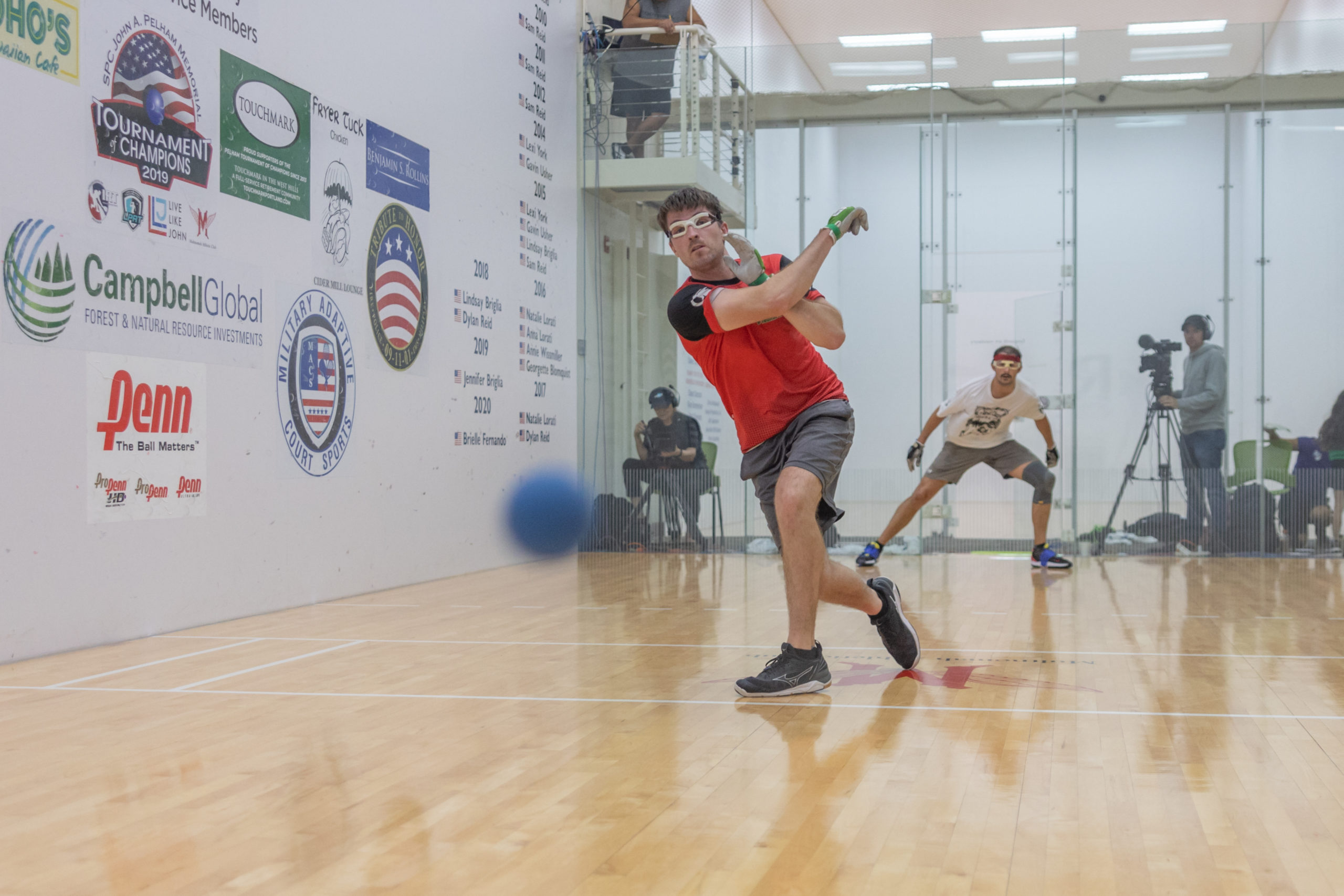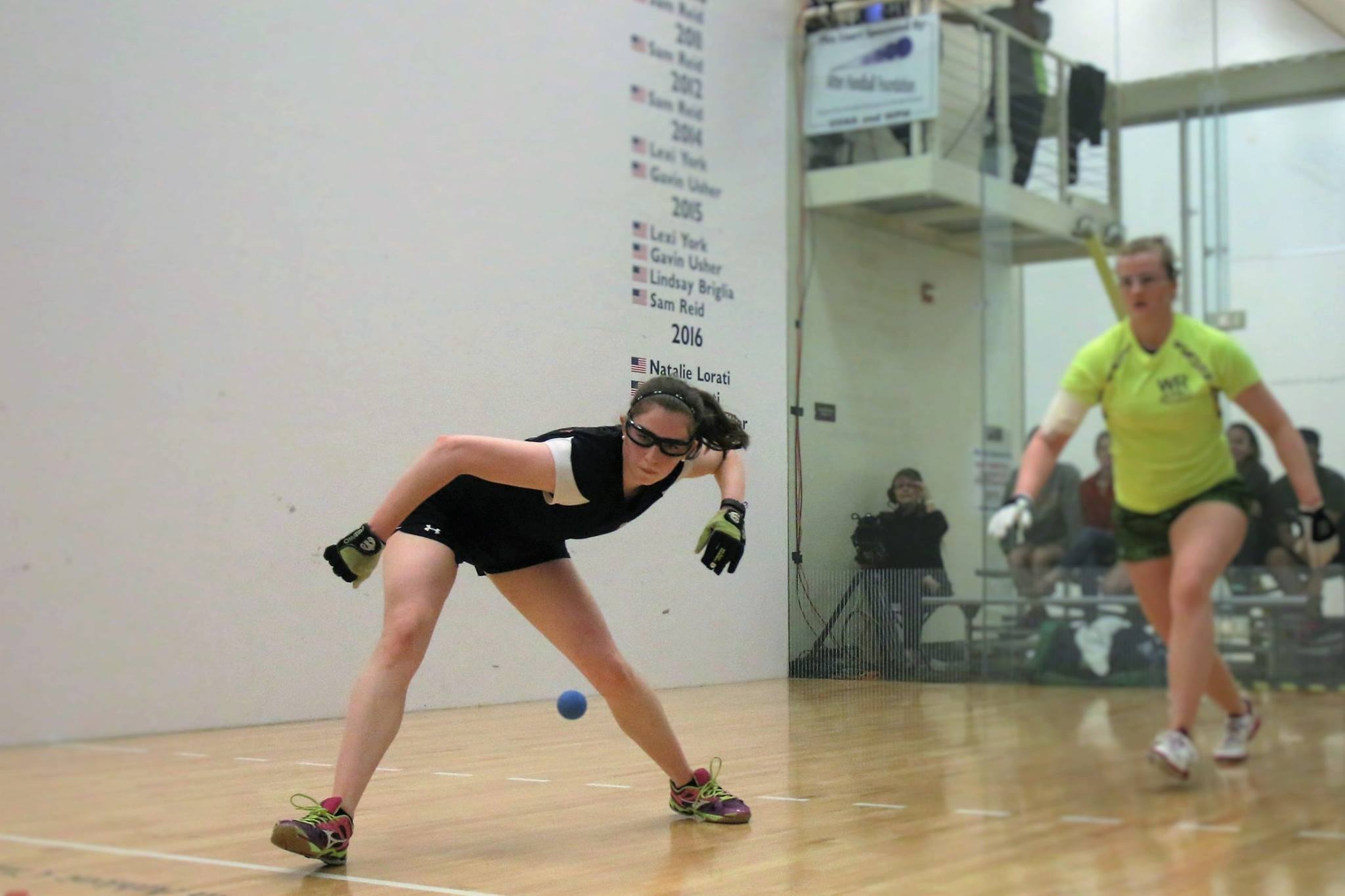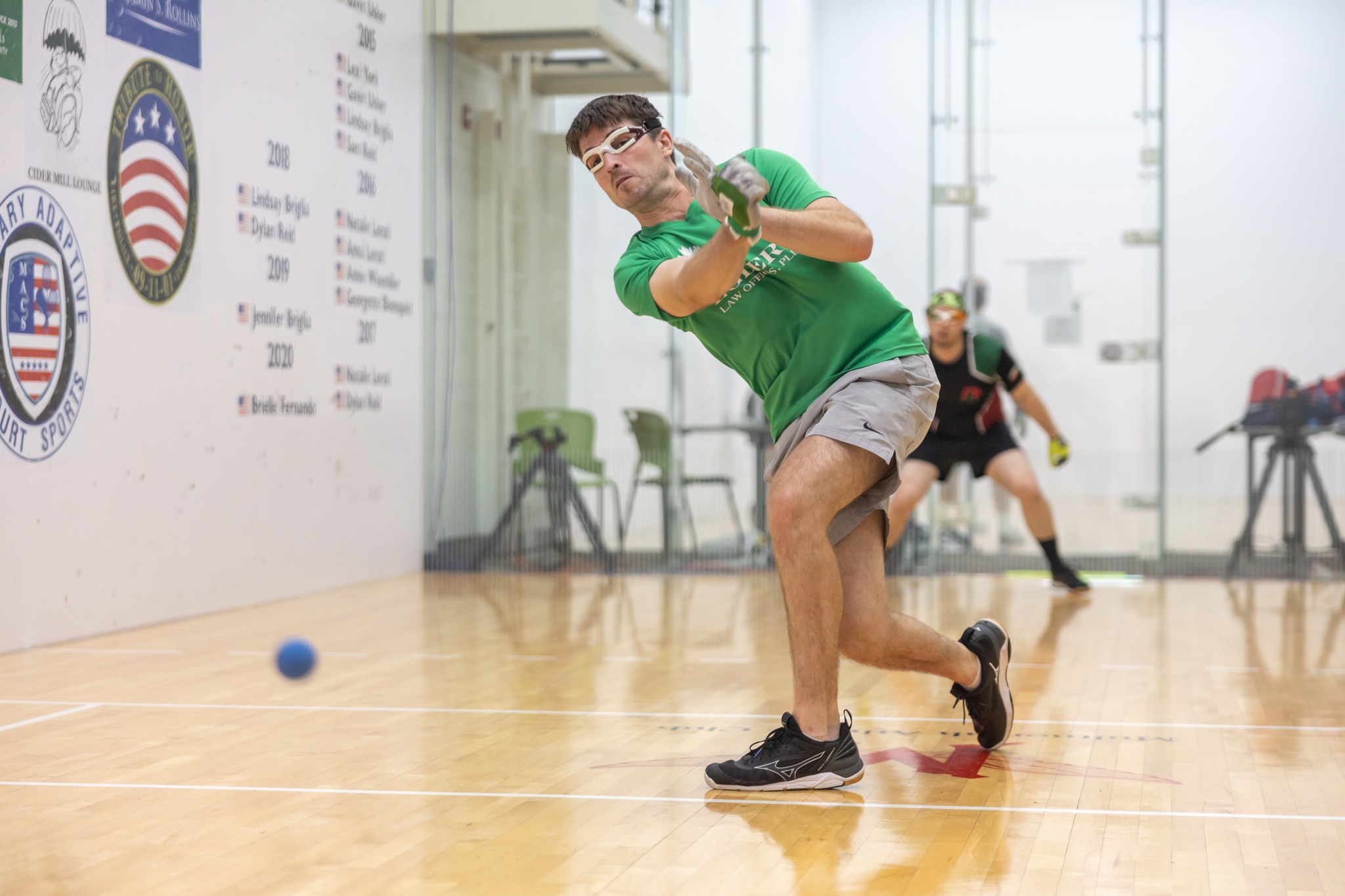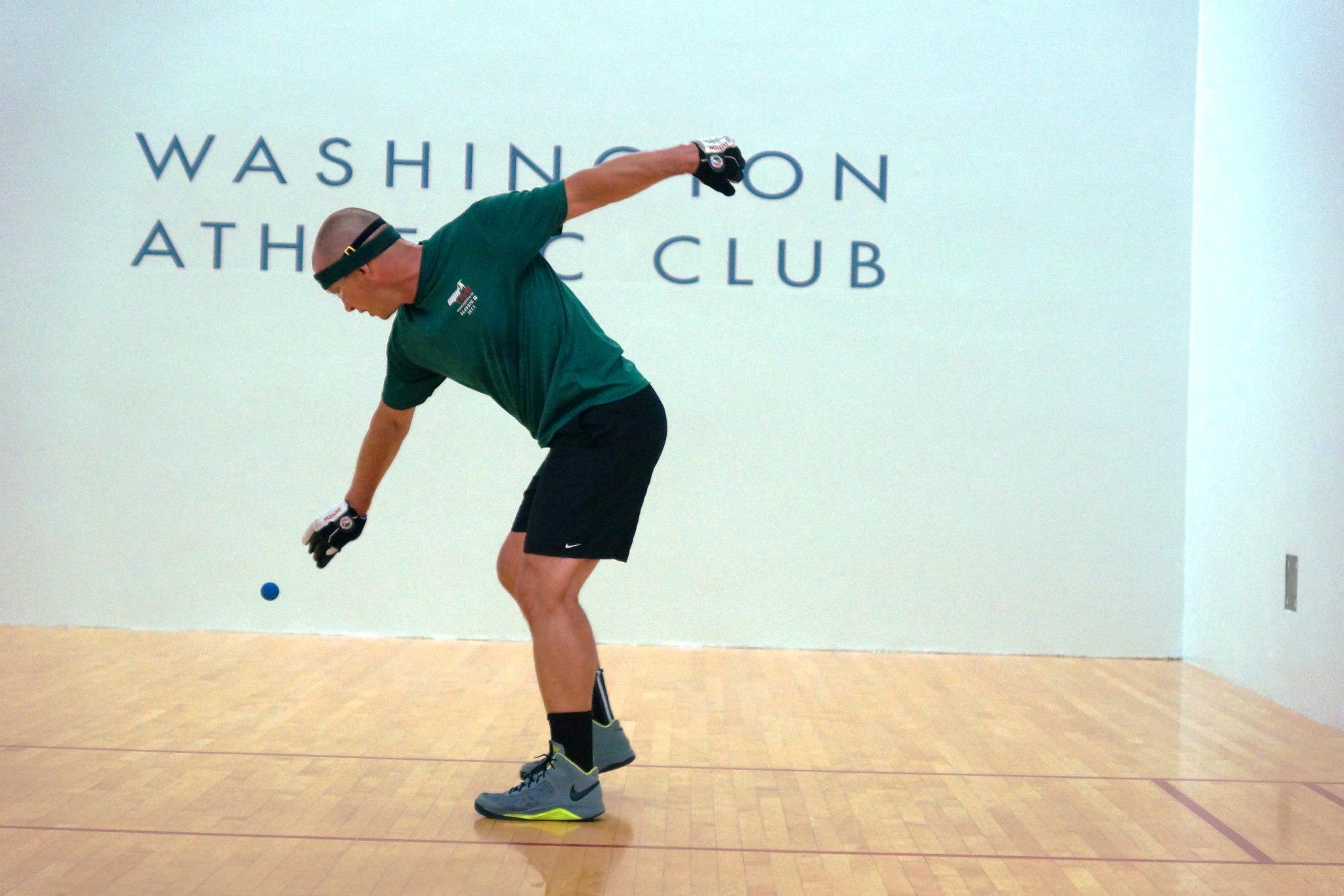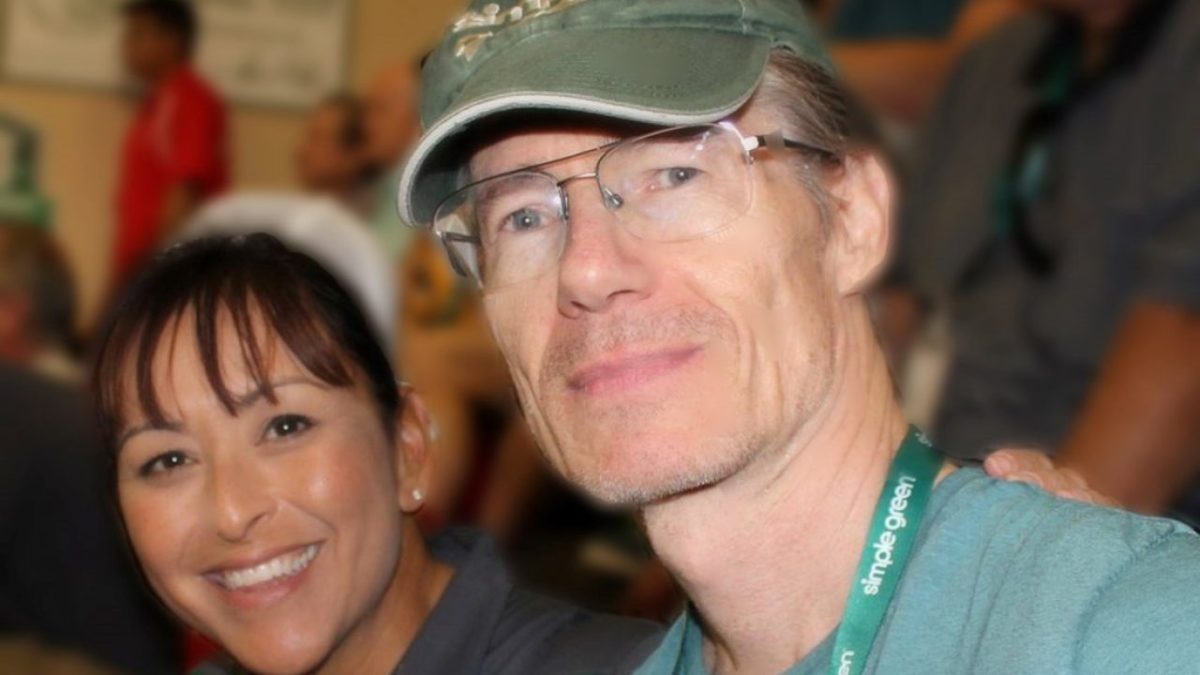By Boak Ferris
You should own the 9 skills listed between the drills and tweaks for both beginners and intermediate competitors. Thus, you’ll notice starting at skill 10 below.
10) For tactical superiority, and to dictate play, you must develop two-way shots for each and all of the shots mentioned among the intermediate skills, in addition to developing two-way shots off of all of your customary and specialized shot-motions. Your pro opponent will read you, and anticipate shots you show, so having go-to options for each shot, allows you to keep your opponent guessing.
If you have mastered the dominant–handed, up-the-line Fred Lewis bounce-pass, now develop a second shot, off the same motion, a kill-shot to the front right corner, and to the mirror target, if you’re lefty. This kill-shot can be straight-in, or sidewall front-wall, or both. You will acquire these options faster if you develop and master the 1-2-3 glide-step, which the opponent will see you use on all of your options, making you harder to predict. If you have developed the cross-court V-pass, now hit a Fred Lewis bounce-pass up the same-side wall, off the same motion. If you have developed the uppercut punch shot, to the ceiling, now develop the underhanded paddle shot kill up the same-side wall (same-side here means sending the ball from right up the right, or from left up the left), using the same motion, showing fist first, and then opening your hand last millisecond. You can use this paddle-shot as a two-way option to your defensive punch for serves, and for surprising servers, who expect you to go to the roof, once they see you can do it. If you served, you can go for a score, with a two-way shot, and if you received serve, you can go for sending the opponent to the farthest corner, with your two-way shots, without flooring the ball. Glide-step to the restraining line, and don’t rush, whenever you drill, after each strike. Learn to strike all these shots on the move, not simply by standing and bouncing the ball to yourself, a habit which will carry over into matches, if you are not mindful.
11) If your shots ever fall of tune, and you need to tune them up, focus on the back-foot plant, along with lining up the backswing to propel your target and follow-through lines. Work to complete a smooth and calm 1-2-3 glide-step, while exhaling through ball-contact. “Exhale the ball to the target.” Lining up your backswing to generate the perfect follow-through line, and knowing you are doing it, forces you to skip your feet and plant step 1 at the correct pre-shoot position. Your tactical shots now go in, not with your mind “aiming” them, but rather with your footwork aiming them.
12) Do not drill any shot, without first habituating moving to the pre-shoot position and then skipping your 1-2-3 into the shot. Always move your backswing and back-foot-plant well behind the point of contact, so that you can 1-2-3 glide-step into drilled shots. Lacking this one discipline costs the most wins for pros in my observations. Champions are fit, so much so that they constantly achieve the pre-shoot position on all shots over long tournament weeks. ‘Hand’ball is really ‘feet’ ball, moving those feet prior to perfectly lining up each address. All the champions won with their feet, with the hands as the last flourish to the motion. If you cannot/will not move your feet, to finish the closed-position 1-2-3, you will need to develop a reliable short-stroke, since you will otherwise feel like you are always staggering or lunging at the ball, without grace and smoothness, and wondering why this opponent won’t let you get any rhythm. It’s not the opponent. . . ., except the one in your mind that excuses less-than-helpful habits. Note, during a match, when you make up your mind to line up your backswing guide, and then commence your 1-2-3, you will automatically move to the proper pre-shoot position. Furthermore, using your full steps and time forces the opponent to wait, partitioned away from your forward motion, as you select the best two-way shot for offense or defense.
13a) Experiment with maintaining your hitting elbow above an imaginary horizontal plane that cuts the ball in half. Keep your elbows up well before stepping into shots, so you can take a quick downswing if you’re surprised, and so you can alter your swing from sidearm to pendulum to punch, or even to overhand at the last second. Casey does this better than any human on the planet.
13b) While talking about the high-elbow, it’s time to talk about improving your power. You do not need big power to become a champion, but most pros enjoy power, which is useful to have against lower competitors who cannot defend power with perfect shot-heights and court-positioning as did Chapman.
So, here’s where massive power comes from. You can increase your power by maintaining a hitting-arm high-elbow prior to contact, and by “holding” that elbow above the plane of the ball, as you snap your follow through toward the wall target. Tati Silveyra mastered this “held” high-elbow-drive. It may take a toll on your hips, since your legs have to absorb the heavy and accelerated follow-through, especially if you don’t pivot well on your finishing front foot as Brady does.
Big power also depends on generating “cantilevered” torque with your double-shoulders’ opposition-rotation, while maintaining a low center of gravity. The front arm sweeps out, elbow up, as the hitting upper-arm drives the hitting elbow up to down. To finish, the front elbow rotates from up to down, as the hitting elbow snaps out and around, just like pitching a fast ball. Thus the elbows and shoulders work in opposition to create a cantilever between the front arm sweep, followed by a milliseconds’ time-lag, and then the rear-arm snap, generating massive upper-body torque.
Once you think about it, you can begin to feel it, when you get it. But if you just use the arms, and not your legs and hips, you become top-heavy, and the ball will never stay down, and scatters. So, at the same time, you must integrate your second cantilever, generated by the rotational lag between your rapid hip-girdle rotation toward the target, and the subsequent whip-snap of the dual-shoulders-rotation, all managed over the balls of your feet, while you flex both knees before, and absorb with your front quads and flexed knee after. (Be sure to follow big power with a glide to center court—even habituate the return during solo power-drills.) This hip-girdle acceleration, lagging with the torso turn, is known in golf as generating power with the “X,” the X referring to an imagined shape your body takes, as the hips drive first, uncoiling forward first, in opposition to the lagged torso and shoulders turn which snap around.
By the way, you lose all your natural power, if you do not finish your 1-2-3. So big-power hitters, like Martin Mulkerrins and Brady and Silveyra and Bike, deliberately step down on their final step 3 of their 1-2-3, in order to complete the massive hip rotation required to add huge weight to their shots, followed by lifting the rear heel, to maximize the hip rotation, as the weight transfers to the front. With the finished front step, and a completed rear-foot turnover, prior to contact, the hip-girdle achieves its maximum possible rotation around.
Another secret to power, much unknown, is to press the hitting-side thumb down into the top of your index finger, which will compress all four fingers together, and continuing to push the thumb down into the fingers as you contact the ball. Doing so causes your hitting forearm to behave like a heavy axe, and the ball “springs” off your hand when you snap your wrist. You can add some power by letting the ball roll through the palm from the heel of your hand, and off the end of your fingers, accelerating the wrist snap as you do so, or also by cradling the ball right in the net of your compressed fingers above the palm, and then whipping the fingers toward the target, propelled by the wrist snap. Since power is useless without accuracy, you will always finish your stroke with your palm perfectly parallel to the wall-target at ball-contact. If you prefer accuracy to power, concentrate on the latter.
As you can see, power has a lot of moving parts, so the best way to improve your power, is to practice slow, with getting each part “felt” in your body, with your footwork as your base, and then by moving to the next. You can always add increasing arm speed, once you get the moving parts synchronized. To my mind, power is less important than accuracy and a lesser priority than proper 1-2-3 footwork, which are pre-eminent for competitors who wish to move up the ladders faster.
14) You might also experiment with the Irish Whip—which offers two benefits. First, it’s a quick stroke, one that allows for accuracy and power when you have too little time. Second, the weight transfer is ideal for adapting to and improving your sidearm and pendulum strokes, and it helps teach you a feel for that weight-transfer. As an intangible, it also is a precursor for an excellent punch to the ceiling, as the footwork is similar to that required for a punch, should you wish to develop one, while allowing you to roll the ball through your hand, if you wish to keep an open hand and take power off.
15) If there’s something you need, that you wish to work on, I am pretty sure you know an existing pro competitor who has that skill. It’s best to find role models in online videos who share your stature, body-type, and biomechanical abilities. Where you can go wrong watching videos is falling into spectator mode and watching just the ball. Never watch the ball if you wish to leverage videos for DIY training. Watch your role models’ footwork, positioning, and mechanics, in all rallies, AWAY FROM THE BALL.
*Important note and disclaimer: do not try anything herein without first seeking the necessary advice of your physicians and coaches who may need to certify you to try any included biomechanics or lifestyle choices.
*Coach Boak’s “HANDBALL DRILLS AND TWEAKS for PROFESSIONAL COMPETITORS” are the third of three installments of handball drills for Beginner, Intermediate and Advanced players
Boak’s HANDBALL DRILLS AND TWEAKS for NOVICES AND BEGINNERS HERE
Boak’s “Intermediate Competitor’s Drills” HERE
Thank you to Coach Boak for his invaluable lessons and drills to improve the games of all levels of players.










